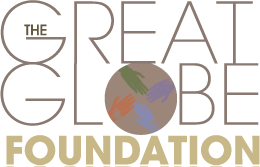
Project Gobi
When a group of 12-17 year old Mongolian performing arts students left their small village in the Gobi Desert for the first time to participate in a cultural festival in Middletown, OH, Michael Littig contacted Julianna Bloodgood with a proposal. At that time, Michael was in Mongolia on his Fulbright and Julianna was teaching at the University of Cincinnati College Conservatory of Music. Michael, who had been engaging with these students in the Gobi, knew that the majority of students at CCM Drama had never experienced such an authentic interaction with another culture and could learn so much from these young Mongolians and Julianna was utterly delighted by the prospects of this cultural exchange.
Within days a task force of actors, led by Julianna, was formed to create a “performance and culture exchange” between CCM and Mongolia.
We wanted to give these visiting students the same legacy of cultural song and dance that they were to impart on us. This created an interesting problem: How do we define America’s cultural song and dance? So we began asking each other questions: What is our cultural story? Our dance? Our song? Our myth? Our dialogue? In less than two weeks of intense collaboration, we created a 30-minute piece that centered around our personal stories of American myth and the defining moments of our young lives.
When the Mongolian students arrived, we had greatly anticipated meeting our new friends and were eager and nervous. Would they like us? Would we be able to convey what was in our hearts? We experienced the joy, confusion, complexity and openness that comes with the strong desire to communicate without words, or rather beyond words, beyond language. We were amazed by their trust, innocence and the virtuosity of their work. We then exchanged gifts. They gave us sacred blessed brilliant blue prayer flags (hadag) and we gave them our precious things: a harmonica, a Polaroid camera, favorite teddy bear. At the end, after a great shared meal, we were speechless at how much love can be communicated without words and how much we were all fundamentally the same.
We went on to continue this exploration over the course of 9 months, creating a piece of theatre that was both personal and universal. We finally performed the culmination of our Project Gobi work, “It Might Be Okay”, in the Cincinnati Fringe Festival in 2009. The project came down to these questions: Is it our culture that defines our myths, or do our myths define our culture? Project Gobi became a group of young individuals hailing from every corner of our nation exploring the myth that is America through the spark of these beautiful Mongolians. There were neither blue oxen nor Babe Ruth in these dreams, but all the lust, sorrow, and madness of modern youth in America. These ten artists became folk heroes of today, young artists looking at this complex, terrifying, dark, hopeful, and beautiful nation that we have loved and cursed.
This was only the beginning of work and it continues from here. Our ultimate vision is to use the transformative and healing power of theatre to unite communities.

